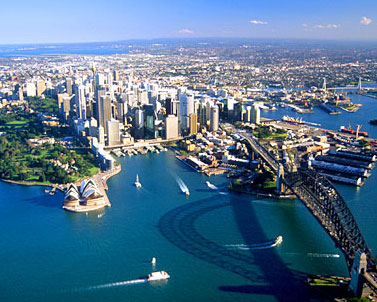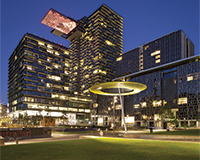
I remember going to Perth in Western Australia shortly after the collapse of Lehman Brothers in late 2008 and asking what effect the global financial crisis would have on the Australian property market. “Those pen-pushers in the east [ie Sydney] might cop a hit, but our deserts are full of the minerals China needs, so we’ll be just fine,” was the confident answer.
The resource-rich economies of Western Australia and Queensland were indeed robust throughout the worst of the financial crisis. A two-speed property market emerged in Australia, with Sydney and Melbourne suffering the same fate as markets such as London, Paris and New York – companies restructured and downsized, rents and values fell and everyone in real estate was a bit gloomy.
Perth and Brisbane, on the other hand, were direct beneficiaries of the huge post-crisis Chinese economic stimulus and subsequent construction surge, which created huge demand for iron ore and coal from Western Australia and Queensland. The local property markets were a hot spot in a chilly world.
Defying gravity tends not to last forever. In 2012, the Chinese slowed their economy, the building boom was over, the resources party abruptly finished. The price of a ton of iron ore fell from a 2010 high of nearly $200 to $46 today, the price of coal fell by 40%. You could hear the sound of tumbleweed blowing through the red Australian deserts – as quiet as the pubs in Richmond after the first round of the Rugby World Cup.
The effect of the sudden end of the decade-long mining boom on the property markets of Perth and Brisbane in 2009 has been dramatic. Office vacancy levels in 2009 were around 3%. They are now nearly 20% in Perth and 15% in Brisbane. The downturn has been most pronounced in Perth, where office rents have halved since 2012.
Meanwhile, Sydney and Melbourne have experienced a broad-based economic recovery and, as two of the most attractive destinations for Asian and other international investors, have enjoyed a feeding frenzy of buyers driving capital values to record highs. Office rents have risen by 8.1% in Sydney over the past 12 months, while yields have come in by 175 basis points over the past couple of years.
Is it time to hunt for bargains in the subdued resource markets? In Brisbane, arguably, yes. Brisbane is a more diverse economy than Perth; we have now recorded three successive quarters of positive occupier growth and vacancy rates are beginning to edge downwards. The yield spread between Brisbane and Sydney is wider than usual and this, combined with decent prospects for a medium-term recovery in rents, makes Brisbane an attractive destination for an investor looking to make a cyclical play.
The case for Perth is less clear, unless you believe that China will create another construction boom or that India will fill the void in the demand for iron ore, but there is no sign of either happening yet.
Probably a better way to look at Perth is simply to buy income returns. You can buy decent assets with good tenants paying today’s deeply discounted rents and get a yield of up to 8.25%. Not bad when Aussie bonds are yielding 2.9%.
Alistair Hughes is chief executive, Asia Pacific, at JLL











